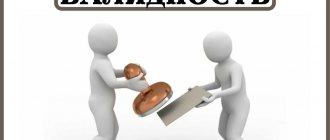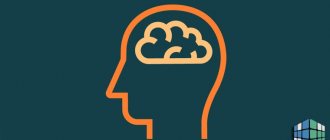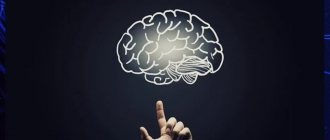The experimental method is also used in other fields of science, but a psychological experiment is very different from them.
In a psychological experiment, it is very difficult to be sure that what needs to be studied is studied. If experimenters in the field of physics and chemistry know what they are studying, what does a psychologist study when studying the psyche? The classic textbook on experimental psychology by R. Woodworth, published in 1938, defined an experiment as an ordered study. During the experiment, the researcher changes some factor, leaving others unchanged, and observes the results of systematic changes. Woodworth considered the distinctive feature of an experiment to be the control of the experimental factor.
Achieving the main goal of the experiment, according to V.V. Nikandrova occurs due to the main characteristics of this method:
- The experimenter takes the initiative in the field of psychological facts that interest him;
- Variation in the conditions for the emergence and development of mental phenomena;
- Monitoring and recording the conditions of the process;
- Isolating some factors and emphasizing others, which makes it possible to determine the patterns of their existence;
- It is possible to repeat the experimental conditions, which is an important point for multiple verification of the obtained scientific data;
- Possibility of varying conditions for quantitative assessments of identified patterns.
A psychological experiment, therefore, can be defined as a method as a result of which the researcher himself causes phenomena of interest to him and himself changes the conditions for their occurrence. The goal is to establish the causes of these phenomena and the patterns of their development.
The resulting scientific facts can be repeatedly reproduced in order to verify them and, on the basis of this, judge the typicality or randomness of the phenomena being studied.
Methods of organizing an experiment
Depending on the method of organization, a laboratory experiment, a natural experiment, and a field experiment are distinguished:
- Laboratory experiment. It is carried out under special conditions. The researcher influences the object of study in a planned and purposeful manner with the aim of changing its condition. The advantage is strict control over all experimental conditions and the use of special equipment. The disadvantage is the difficulty of transferring the obtained data to real conditions. The cause of motivational distortions may be the subject’s awareness of participation in the experiment;
- Natural experiment. Unlike the previous one, it is carried out in real conditions. The study of the object takes place in the context of everyday life, which allows the data obtained to be easily transferred to reality. There are no motivational distortions here, because the subject is not always informed about his participation in the experiment. Unforeseen interference, distortion, and the inability to control all conditions are among its disadvantages;
- Field experiment. It is based on the design of a natural experiment. A familiar environment reduces the level of motivational distortions, despite the fact that the subjects are informed about their participation in the experiment. It is possible to use portable equipment for more accurate recording of the received data.
General concept of psychological experiment
Entry text:
General concept of psychological experiment
General concept of psychological experiment
1. Types of psychological experiment
Experimental psychology is a branch of psychology whose goal is the experimental study of the psyche. The first psychological experiment was conducted in the 18th century. As a scientific direction, experimental psychology emerged in the second half of the 19th century. thanks to the works of E. Weber, W. Wundt, V.M. Bekhtereva and others.
It is generally accepted that with the introduction of experiment into psychology, its chronicle begins as an independent science. The prospect of a mathematically precise substantiation of psychological laws has opened up. Objectivity, repeatability, and verifiability become criteria for the reliability of a psychological fact and the basis for classifying it as scientific. Experimental psychology was based on the theoretical principles of empirical psychology and the results of research into the psychophysiology of the senses. Representatives of experimental psychology were characterized by empiricism and methodological limitations. With the development of psychology, there was no longer any need to separate experimental psychology into a separate branch of psychological science, since the experimental method began to be used in psychological research.
The experimental method (from the Latin experimentum - test, experience) is a method that involves developing a control plan for an independent variable, creating and measuring special conditions in order to cause the process being studied and influence its course. Experiment is one of the main methods of scientific knowledge in general, psychological research in particular. The essence of the experimental method is that it places the phenomena being studied under certain conditions and creates deliberately organized situations. The more perfect these changes in conditions are, the more facts appear on the basis of which a non-random relationship is established between experimental influences and objective results. The experiment allows you to study certain aspects of personality under the influence of factors in specially created conditions.
A psychological experiment is one of the main methods of psychological research, which allows one to place the phenomena under study in certain conditions and create deliberately organized situations. A psychological experiment is a method of studying mental phenomena (processes, states, properties and formations), in which the truth of the put forward assumptions (hypotheses) is tested. This is a purposeful, precisely taking into account the conditions, strictly staged experiment, which allows not only to describe mental phenomena, but also to explain them. An experiment makes it possible to decompose and separately study the components of a phenomenon, more or less accurately record the results, monitor the progress of the development of a mental phenomenon, not waiting for it to arise, but causing it, actively recreating it in the most favorable conditions, vary, intervene in a planned manner, change and repeat the features of its implementation many times.
In contrast to the study of mental phenomena (facts) in natural conditions through direct observation, an experiment allows you to artificially separate the phenomenon being studied from others, purposefully change the conditions of the formative influence on the subjects, and track the results obtained.
Successful conduct of a psychological experiment requires: understanding the essence of not only empirical, but also theoretical knowledge; ability to master the system of cognitive procedures; psychological mastery, where the organizational skills of the experimenter play a special role.
A psychological experiment serves to study the facts with the help of which certain objective dependencies in mental processes, states, properties and formations are discovered. During the experiment, various sources of obtaining facts are used: observation, individual conversation, sociometric measurements, organization of certain types of group and individual activities. Without concrete facts there can be no experiment.
I.P. Pavlov said that “facts are the air of a scientist, without them you will never be able to take off. Without them, your “theories” are empty attempts.”
A psychological experiment, depending on the conditions under which it is conducted, can be of various types. Its classification is based on a number of criteria:
a) according to the time of the experiment - short-term and long-term (longitudinal);
b) according to the structure of the phenomena being studied - single-factor (simple) and multi-factor (complex);
c) according to the purposes of the study - ascertaining and formative;
d) according to the organization of the conduct - laboratory and natural;
e) for control of variables - ideal and real;
e) according to the number of hypotheses - critical and demonstration.
The four main types of experiment are most often used: laboratory, natural, ascertaining and formative.
One of the features of the experiment is that it is used to identify non-random relationships between experimental influences and their results under specially created experimental conditions. However, in the process of a psychological experiment, one must take into account the fact that subjects participate in it, therefore one cannot arbitrarily vary, trying various experimental situations in a row, which would harm the process of development of their personality.
The second feature of a psychological experiment is that with its help, such mental phenomena and their dependencies are studied that cannot be obtained in their pure form by taking them out of life. Mental phenomena, as a rule, are woven into a very complex and dynamic system of external and internal interactions of subjects with the environment. Here there is always a mutual penetration of natural living conditions and experimentally created conditions into each other.
The natural living conditions of the subjects can be considered as interference that cannot be completely eliminated. The result of the experiment is influenced not only by specially organized influences, but also by the entire set of life influences. This cannot be ignored when the moment of processing the material comes and the degree of purity of the result is determined.
The third feature of the experiment is the long preparatory stage immediately preceding the practical experimental work. During this period, scientific-cognitive tasks, experimental hypotheses, and a plan for its conduct are developed, and the subjects are studied in terms of their psychological characteristics. To formulate a scientific-cognitive task means to define a psychological dependence that will be studied through an experiment.
The fourth feature of the experiment is related to the choice of the object of experimentation. It is advisable to carry out an experimental study of personality by working with small groups that can not only be effectively controlled in accordance with the hypothesis, but can also be controlled by a larger number of factors, connections and dependencies.
The experimental techniques are extremely varied. Often, studying even closely related issues of the same problem requires the development of independent methods. But whatever methodology is developed, one must be guided by the following requirements.
1. Conducting preliminary targeted observation of the phenomena being studied in order to determine initial data and a hypothesis or a series of interrelated hypotheses.
2. Creation of conditions in which experimentation is possible, selection of objects for experimental influence, and, if possible, their equalization.
3. Careful development of the experimental work procedure.
4. Systematic observations of the development of the phenomenon (object) being studied and an accurate description of the facts. In some cases, such accuracy of description is needed when the result can be expressed mathematically.
5. Carrying out systematic registration of facts by various means and methods using appropriate devices, diagrams, questionnaires, tests, psychological characteristics, and mathematical apparatus.
6. The transition from empirical study to logical generalizations, to analysis and theoretical processing of the obtained factual material. Facts are always the consequence of causes, and these causes are established on the basis of facts.
Research is not limited to the sum of facts obtained by experiment. The highest stage in the process of cognition is theoretical thinking. From empirical data, from the facts of the experiment, the researcher moves on to generalizations, to the disclosure of cause-and-effect relationships. In the process of theoretical work, previously existing scientific ideas are analyzed in comparison with the experimental data obtained.
Along with the emergence of new types of psychological experiment, it is also necessary to note some of the most important changes that have occurred in the general methodological nature of the psychological experiment itself. This includes the development and widespread use in experimental research:
a) general methods aimed at ensuring, first of all, the fullest possible control of experimental conditions, for example, such as the method of parallel groups - experimental and control;
b) special methods, for example, such as methods for studying the phenomena of memory, attention, emotions, etc.;
c) relevant technical equipment, with extensive use of video filming, sound recording, computers, etc.;
d) appropriate statistical methods that made it possible to conduct an experiment with two or more independent variables.
The most important factors that determined both the emergence of new types of psychological experiments and the changes that occurred in the general methodological nature of the experiment itself include the following: a) changes that have occurred in the understanding of the general tasks of psychology; b) gradual expansion of the scope of application of experimental methods in the study of mental phenomena; c) the desire to obtain more and more accurate, reliable and objective results in experimental studies.
2. Subject area of the experiment
Classifications of types of experiments are based on different grounds. One of these grounds, or classification criteria, is that the original hypothesis, experimental conditions, or sample of subjects belong to special areas of mental reality, i.e. their relevance to a specific subject area .
The paths of transition from the “world of empiricism” to the “world of theories” that have developed in one or another area of psychological knowledge include the orientation of researchers towards the principles of interpretation of psychological patterns that are justified within the framework of specific theories. For example, testing the hypothesis about the role of eye movements in the emergence of the Müller-Lyer illusion traditionally belongs to the field of psychology of perception, while the analysis of factors influencing the identification of emotional states from photographs of faces belongs to the psychology of emotions. La Pierre's experiment, which showed the difference in the manifestation of ethnic prejudices at the verbal and behavioral levels, traditionally belongs to the field of social psychology. In this experiment, inquiries were first sent to hotels asking whether they would accept Chinese people, and then the researcher actually visited these addresses with the Chinese.
Research on the influence of personal prerequisites on the success of entrepreneurial activity should be classified as a developing field of entrepreneurial psychology. But with the same right they can be attributed to personality psychology, if we consider the specific conditions of the professional activity of the subjects only as a specific background for the manifestation of personal factors regulating activity.
With this approach, there is a possibility of making a mistake in the interpretation of the psychological mechanisms that manifested themselves in the experiment. A classic example is the so-called Hawthorne experiment, which, according to its goals, should be classified as labor psychology. Let us recall that it changed numerous environmental factors and assessed the impact of these changes on labor productivity. As it turned out, any change, regardless of its type, led to an improvement in the performance of workers. The interpretation that people, knowing about the goals of the experiment, responded positively to the very fact of an attempt to improve their working conditions was accepted as adequate. Now this experiment is presented more often in sections devoted to “experimenter effects” rather than work psychology, since the pattern that emerged in it turned out to be a more general mechanism.
At the same time, we must not forget about the subject-matter relevance of psychological hypotheses to one or another area of psychological knowledge, since each of these areas has developed its own special standards for testing hypotheses, related to the type of construction of the psychological theory itself and the possibilities of collecting empirical material.
A professional engaged in perceptual research will differ from a professional devoted to research in the field of social psychology precisely in the development of forms of experimental control, since the experiment in each of these areas implements different approaches to ways of controlling variables, different understandings of causality and consideration of other types of justifications in organizing meaningful conclusions.
3. Differences in the forms of experiment implementation
An experiment conducted with the aim of obtaining empirical evidence in favor or against the understanding of a psychological pattern assumed in a hypothesis is called real, or implemented. It is contrasted with a thought experiment, i.e. practically not implemented. A thought experiment can be flawless and endless.
A flawless experiment is a mental model of a psychological experiment in which there are no threats to a valid conclusion.
An infinite experiment is a mental model for evaluating actual experiments in which the number of trials or number of subjects is evaluated to cover all sources of variability in variables.
The relationship between substantive and formal design in these types of experiments is common in all those contexts that do not take into account the problem of controlling for confounding of independent variables with covariates. In the experiments being carried out, it is impossible to make do with the assumption of the absence of mixtures, but it is necessary to ensure their control in order to be able to take into account their influence on the obtained experimental effects. In thought experiments, one can assume any ideal conditions and consider basic processes in any indicator of their manifestations, even if there are no real methods for operationalizing variables yet. When evaluating a psychological hypothesis in terms of the results implied by a thought experiment, there is no need to relate the outcome of the independent variable to an assessment of the internal and operational validity of the experiment.
List of used literature
1. Druzhinin V.N. Experimental psychology: textbook.
– M.: INFRA-M, 2000.
2. Kornilova T.V. Introduction to psychological experiment: textbook. – M.: Moscow State University Publishing House, CheRo, 1997.
Druzhinin V.N. Experimental psychology: textbook. – M.: INFRA-M, 2000
Kornilova T.V. Introduction to psychological experiment: textbook. – M.: Moscow State University Publishing House, CheRo, 1997
Objectives of the study
Experts distinguish between exploratory, pilot, and confirmatory experiments depending on the purpose of the study:
- Search experiment. As a rule, it is aimed at searching for a cause-and-effect relationship between phenomena and is carried out at the initial stage of the study. A search experiment allows you to formulate a hypothesis, identify independent, dependent and secondary variables, and also determine ways to control them;
- A pilot experiment or trial, the first in a series. It is conducted without strict control of variables on a small sample. This type of experiment makes it possible to eliminate gross errors in the formulation of the hypothesis, as well as to specify the goal and clarify the methodology of the experiment;
- Confirmatory experiment. This type is aimed at clarifying the quantitative relationships between variables and establishing the type of functional connection. It is carried out at the final stage of the study.
Experimental psychology
The discipline under consideration has one very significant direction. It is called experimental psychology and aims to study human behavior.
The first experiment in this area was carried out back in the 18th century. However, the experimental scientific direction developed only in the second half of the 19th century. This happened thanks to the works of W. Wund, E. Weber, V.M. Bekhterev and others.
It is generally accepted that it was after the introduction of experiment that psychology emerged as a separate science. After all, obtaining data experimentally opened up the prospect of substantiating the processes under consideration with mathematical accuracy. The reliability of existing facts began to be identified on the basis of indicators of their objectivity, verifiability and repeatability. Over time, the need to separate experimental psychology into a separate direction disappeared by itself. After all, the researchers’ method began to be used in all areas of this discipline.
The nature of the influence on the subject
Depending on this factor, we can distinguish ascertaining, formative, and control experiments:
- Ascertaining experiment is one of the types, the purpose of which is to change one or more independent variables and their effect on dependent variables;
- Formative experiment. Its essence is that a person or group of people takes part in organized training and the formation of any qualities and skills. Formative experiment is widely used in Russian psychology, because through the creation of special situations it allows one to reveal patterns, mechanisms, dynamics, and trends in the development of the mental formation of personality;
- A control experiment, its essence is to re-measure the state of the object and compare it with the initial state, in addition to comparing the state of the control group that did not receive the experimental influence.
Main goals and objectives of the experimental method
The goal of conducting a psychological experiment is always to achieve the greatest clarity in establishing connections between internal mental processes and their external manifestations.
The main task of the experimental method in psychology is to identify and implement maximum accessibility for external observation of the characteristics of internal mental processes.
To do this, they change the conditions of external activity and experimentally select a situation in which the observed course of a given act fully testifies to the internal mental content. The task of varying the conditions is to find one, the only correct interpretation of the committed act or action, while eliminating the possibility of others.
J. Prater's experiment: the effectiveness of mental training
Psychologist J. Prater proved his hypothesis that skills develop and improve faster if you combine practical training with mental training. He studied this effectiveness of mental training on military academy cadets during training landings of a T-37 aircraft. 23 cadets took part in the study. All of them underwent standard training on simulators, and some of them collectively carried out mental training in a mock-up cabin. As a result, the results were obtained according to which the participants in the experimental group received higher scores in both knowledge and technique.
Stanford prison experiment
The Stanford Prison Experiment was conducted by American psychologist Philip Zimbardo in 1971 at Stanford. It examined a person’s reaction to the conditions of imprisonment, restriction of freedom and the influence of an imposed social role on his behavior. Funding was provided by the US Navy to explain the causes of conflict in the Marine Corps and Navy correctional facilities. Men were selected for the experiment, some of whom became “prisoners”, and the other part became “guards”.
The “guards” and “prisoners” very quickly got used to their roles, and sometimes very dangerous situations arose in the makeshift prison. A third of the “guards” showed sadistic tendencies, and the “prisoners” received severe moral trauma. The experiment, designed to last two weeks, was stopped after just six days, because... it started to get out of control. The Stanford prison experiment is often compared to the Milgram experiment described above.
In real life, you can see how any justifying ideology supported by the state and society can make people overly susceptible and submissive, and the power of authorities has a strong impact on the personality and psyche of a person. Observe yourself and you will see clear evidence of how certain conditions and situations influence your internal state and shape your behavior more strongly than the internal characteristics of your personality.
It is very important to be able to always remain yourself and remember your values in order not to be influenced by external factors. And this can only be done with the help of constant self-control and awareness, which, in turn, require regular and systematic training.
Details of the Stanford Prison Experiment can be found by following this link.
4
Classification
There are different types of experiments in psychology. Moreover, they are distinguished based on the conditions of implementation, goals, nature of influence and many other factors.
Experimental methods in psychology themselves are divided into laboratory and natural, as well as formative research. In addition to this classification, there is a division into aerobatic (primary) experience and subsequent ones. Also, experiments can be explicit and have a hidden purpose, etc. Let's look at the most frequently used of them in more detail.
Experiments by G. Harlow (study of the nature of love)
American psychologist Harry Frederick Harlow (1906 – 1981) was the first to experimentally study love. Before his experiment, it was believed that a child's love for his mother consisted primarily of satisfying his needs, such as hunger, thirst and the desire to avoid pain. According to Harlow's hypothesis, love and emotional attachments are basic needs that have the same importance as biological needs.
To confirm the hypothesis, it was necessary to create conditions in which not one mother, but several, would satisfy the child’s needs. Due to the fact that such a situation is impossible for ethical reasons, Harlow began to conduct an experiment on rhesus monkeys. For the purity of the experiment, mothers had to be isolated. The cubs had a hard time experiencing the separation, but they found something warm and familiar in the terry towel placed under the cages. When separated from him, a negative reaction arose again.
Then 4 stages of the experiment were carried out and the following results were obtained:
- Given two surrogate mothers, all monkeys spent more time with the one that was soft and warm, rather than with the wire one, but with a food bottle.
- In an isolated concept, where both surrogate mothers (soft and wire) were provided with bottles of milk for feeding, subjects with the wire design suffered from digestive problems and were developmentally delayed.
- When a stressful situation was created with the help of a monster making loud sounds and making sudden movements, all the experimental subjects ran to the soft “mother”. Touching her calmed them down.
- When constructing "evil mothers" who pushed their babies away in different ways, they still attracted the little macaques to themselves.
This experiment brought great benefits to humanity, but at the same time caused irreparable damage to monkeys. Therefore, Harlow's experiments were criticized by the scientific community. Nadezhda Kozochkina also writes about this in her work “The Source of Despair – An Experiment on Monkeys Raised in Social Isolation” [4].
The "bittersweet" phenomenon
When considering visually effective thinking, psychologists were puzzled by the question: why sometimes children 3-6 years old can easily solve tasks that younger schoolchildren cannot cope with. Asnin managed to prove that the success of the problem solving process depends not only on the objective content of the latter, but primarily on the motive that is given by the task. This finding is known today as the “bittersweet” phenomenon. This name was formed due to the fact that the essence of the experiment was to get candy from a table with high sides. Younger children, without hesitation, took the stick to help themselves and got what they wanted, while older children were embarrassed to use the aid, believed that it was so simple for their age, and in most cases voluntarily abandoned it, trying to complete the task on their own. Thus, we can say that they relied more on conscience than on reason. But this only happened at a moment of low interest. When it was necessary to get the shoes, that is, a situation arose regarding the task of obtaining the necessary item, it was instantly solved by using that same wand.
Little Albert
An experiment called “Little Albert” or “Little Albert” was conducted in New York in 1920 by psychologist John Watson, who, by the way, is the founder of behaviorism, a special direction in psychology. The experiment was carried out in order to find out how fear is formed for objects that previously did not cause any fear.
For the experiment, they took a nine-month-old boy named Albert. For some time he was shown a white rat, a rabbit, cotton wool and other white objects. The boy played with the rat and got used to it. After this, when the boy began to play with the rat again, the doctor hit the metal with a hammer, causing very unpleasant sensations in the boy. After a certain period of time, Albert began to avoid contact with the rat, and even later at the sight of a rat, as well as cotton wool, a rabbit, etc. started crying.
As a result of the experiment, it was suggested that fears are formed in a person at a very early age and then remain for the rest of his life. As for Albert, his unreasonable fear of the white rat remained with him for the rest of his life.
The results of the “Little Albert” experiment, firstly, again remind us of how important it is to pay attention to every little detail in the process of raising a child. Something that seems completely insignificant to us at first glance and is overlooked, can in some strange way be reflected in the child’s psyche and develop into some kind of phobia or fear.
When raising children, parents must be extremely attentive and observe everything that surrounds them and how they react to it. Secondly, thanks to what we now know, we can identify, understand and work through some of our fears for which we cannot find the cause. It is quite possible that what we are unreasonably afraid of came to us from our own childhood. How nice can it be to get rid of some fears that tormented or simply bothered you in everyday life?!
You can learn more about the Little Albert experiment here.
10
What is a scientific experiment?
A scientific experiment is the implementation of a set of activities aimed at studying a specific phenomenon or object in order to establish strengths and weaknesses, problems and find the optimal way to solve them.
How is a scientific experiment carried out?
To conduct an experiment in scientific activity, the researcher must correctly identify a number of parameters:
- Object (what he intends to study);
- Subject (to specify the boundaries of the scientific field or knowledge, to what extent, topics and its individual components);
- Duration (how much time is needed to obtain a result or achieve an intended goal);
- Tools and material or other resources (materials, equipment, methods, conditions, etc.).
A scientific experiment must comprehensively explore the effect of laws, theories and other rules in life. To do this, it is important to collect all the necessary data, create conditions for its implementation and promptly record the results obtained, which are subsequently analyzed.
An experiment can be carried out in different ways: actively (when the organizer intervenes in the course of the event, adjusts actions or conditions, etc.) and passively (the most common option in this case is observation from the outside).
A scientific experiment is characterized by several criteria:
- Repeatability. This parameter is applicable mainly in exact fields of science, where the organizer will receive similar results when holding events again. In psychology, a similar technique does not work (in this case, the human factor predominates);
- Reproducibility. This parameter means that any person, if desired, can repeat the experiment and get similar results, double-check the activities, understand the course of actions and thoughts, dependencies, etc.
- Limited time. This is the most important criterion. Activities to study a specific problem and object can last from several minutes to several years. The author of a scientific work must initially determine: how much time he is ready and able to spend on the implementation of actions and activities, how much time it will take to process data and format it, etc. A correctly selected time range will allow one to obtain results, propose relevant measures, etc.
Any difficulties?
Need teacher help?
We are always happy to help you!
master's theses
Norman Triplett's Experiment (1898)
The first socio-psychological experiment was conducted by psychologist N. Triplett, when he decided to test the theory that athletes demonstrate better results in competition with a team, and not against a stopwatch. To test, children were asked to spin the spinning rod at speed. In the first group, the children did this isolated in an empty room, and in the second group - all together. As a result, the second group showed better results than the first. This phenomenon of improved performance in the presence of other people is called the “social facilitation effect.”
Subsequently, psychologists conducted similar experiments, but using other tasks: dressing, remembering words, solving arithmetic problems. As a result, it was proven that in the presence of other people it is easier to complete simple tasks for a quick reaction, and during complex, creative tasks it is better to isolate yourself, otherwise the opposite effect of inhibition occurs (deterioration of results in the presence of other people).
Classification by level of awareness
What other types of experiments in psychology exist? Similar studies are divided according to the level of awareness of what is happening by a person.
In this case, the following are distinguished:
- An obvious experiment. When conducting it, the subject has comprehensive information about the goals and objectives of the research being conducted.
- Intermediate. This option involves familiarizing the subject with only part of the information about the experience. Other information is either distorted or concealed.
- Hidden. The participant, as a rule, knows nothing about this experiment. He does not know not only about the goals that psychologists face, but also about the very fact of carrying out the work.
Stages in preparing and conducting an experiment
- The problem to be investigated is identified. A hypothesis is being formulated.
- Study of scientific treatises. A selection of key terms. Creating a list of literature necessary to conduct this experiment.
- The meaning of variable indicators is clarified.
- To register a variable that is dependent, the necessary tools are selected.
- A study is planned. Auxiliary variables are identified and an experimental plan is created.
- Sampling is being carried out. When the selection is made, the participants are distributed into groups.
- An experiment is being conducted.
- Statistical data is processed.
- The results obtained are interpreted and final conclusions are drawn.
- The results are recorded, for example, in the form of a scientific publication.
To establish a “researcher-subject” connection, you cannot do without instructions. It is given to the subject during the experiment in order to explain what is happening, what requests will need to be fulfilled, and what will have to be done in general. All participants in the experiment receive approximately the same instructions; the individual characteristics of each person are also taken into account, because some are worried, while others remain cold-blooded; everyone needs their own approach. Therefore, the task of the psychologist is to provide everyone with instructions adequate for their understanding.
Most of the instructions make the following requirements:
- articulating the meaning and purpose of the study;
- a clear statement of the content, details and course of the experiment;
- There should be a detailed description, with concise text.
There is also a sampling problem. The researcher must decide on the number of participants in the experiment and their composition. Often an experimental team is formed, as well as a control group. There are times when it is very difficult to decide on a team of subjects without systematic error in the selection process.
Classification by possible influence
According to this characteristic, there is also a certain gradation of psychological experiences. In this case, the following are distinguished:
— provoked research;
- an experiment that is referred to afterwards.
Provoked research is classic. When conducting this experiment, a specialist independently changes the experimental conditions. That is why those types of reactions that are observed in the test subject are considered provoked.
The experiments referred to are experiments in which there is no intervention by the researcher. This method is used in cases where the impact on the subject can cause serious psychological or physiological disturbance.
Hawthorne Studies (1924-1932)
A group of researchers in the small town of Hawthorne studied the influence of objective factors such as lighting, pay, and breaks on labor productivity at the Western Electrics telephone plant. Several stages of the experiment were carried out, at each of which different results were obtained. This is how the Hawthorne effect was discovered: increased attention, interest in the experiment, as well as novelty lead to higher results for subjects. He received both positive reviews from psychologists, since thanks to this experiments new branches (work and management psychology) appeared, as well as criticism. Psychologist Nadezhda Kozochkina writes about this in her work “The Hawthorne Experiment: What Affects Labor Efficiency” [5].
Project "Aversia"
This terrible project was carried out from 1970 to 1989 in the South African army under the “leadership” of Colonel Aubrey Levin. This was a secret program aimed at clearing the ranks of the South African army of persons of non-traditional sexual orientation. According to official data, about 1,000 people became “participants” in the experiment, although the exact number of victims is unknown. To achieve a “good” goal, scientists used a variety of means: from drugs and electroshock therapy to chemical castration and sex change operations.
The Aversia project failed: it was impossible to change the sexual orientation of military personnel. And the “approach” itself was not based on any scientific data about homosexuality and transsexuality. Many victims of this project were never able to rehabilitate themselves. Some committed suicide.
Of course, this project concerned only people of non-traditional sexual orientation. But if we talk about those who are different from the rest in general, then we can often see that society does not want to accept people “different” from the rest. Even the slightest manifestation of individuality can cause ridicule, hostility, misunderstanding and even aggression on the part of the majority of “normal” people. Each person is an individual, a person with his own characteristics and mental properties.
The inner world of every person is a whole universe. We have no right to tell people how they should live, speak, dress, etc. We should not try to change them if their “wrongness,” of course, does not harm the life and health of others. We must accept everyone as they are, regardless of their gender, religion, political or even sexuality. Everyone has the right to be themselves.
More details about the Aversia project can be found at this link.
8
The Bobo Doll Experiment: A Behavioral Study
Canadian and American psychologist Albert Bandura (1925) with his colleagues Dorothea Ross and Sheila Ross in 1961 conducted a socio-psychological experiment on the characteristics of children's inheritance of behavioral aggressive actions of adults. A large Bobo toy was used to aid the experiment on 72 children aged 3-5 years. All children were shown in three different ways how an adult beats this same toy. The first group saw it live, the second group saw it on video, the third group saw it in the cartoon “Herman the Cat,” and the fourth group (control group) saw nothing. As a result, the subjects who observed aggressive behavior actually demonstrated aggressive behavior more often than subjects from other groups.
Notes
- Nikandrov V.V.
Observation and experiment in psychology. St. Petersburg: Rech, 2002 - Research in psychology: methods and planning / J. Goodwin. St. Petersburg: Peter, 2004. P. 172.
- * Zarochentsev K.D., Khudyakov A.I.
Experimental psychology: textbook. - M.: Prospekt, 2005. - P. 74. - 208 p. — 3000 copies. — ISBN 5-98032-770-3. - M.-L.A. Chepa, N.M. Bugaiova. Problems of ensuring the validity of an experiment in a virtual environment / Experimental method in the structure of psychological knowledge. - M., 2012. - P. 82-86. ISBN 978-5-9270-0248-1.
- Gottsdanker R.
Fundamentals of psychological experiment. M.: MGPPIA, 1982. P. 51-54. - See also there. pp. 76-77.
- Druzhinin V. N.
Experimental psychology. — 2nd ed., add. - St. Petersburg: Peter, 2002. pp. 78-85. - Zarochentsev K. D., Khudyakov A. I.
Experimental psychology: textbook. P. 50. - ↑ Rubinshtein S. Ya. Experimental methods of pathopsychology and experience of using them in the clinic (a practical guide). - M.: Medicine, 1970. - P. 215.









